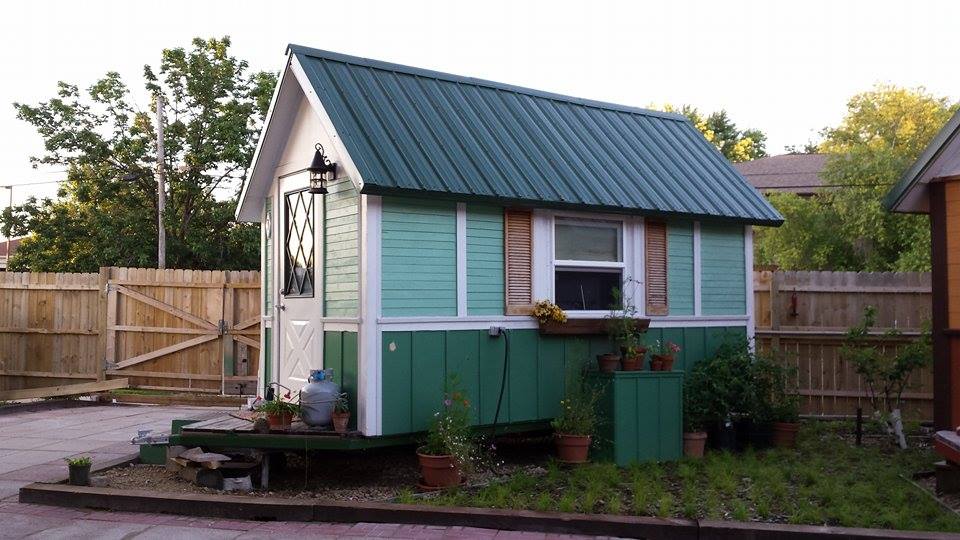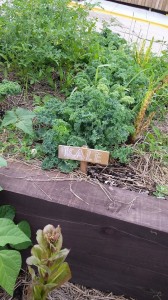Hello, I’m Brendan. I’m a rising Gallatin senior studying design and sociology. I am on a journey across the U.S. in an old beat-up Jeep with my fabulous partner, sound tech, cinematographer, salad-maker, tent-pitcher, etc. etc. Luna. We are searching for Tiny Houses.

My research project was proposed as an exploration of the potential of Tiny Houses, specifically Tiny House communities in the United States. I will be filming, conducting interviews, documenting, and hopefully chatting around campfires with some Tiny House people to see what wisdom this architectural trend and its people can bestow. By way of context, although definitions are loose, a Tiny House is a house that is somewhere in the range of 100 to 400 square feet and is often built on a trailer to avoid building codes and zoning laws associated with traditional foundation-based construction. Often homemade, some of the first of these houses were touted as a response to the mortgage crisis; others are the manifestation of dreams to live a more eco-friendly, off-the-grid, downsized, and free life. Some Tiny Houses are mobile and some are not, but many of them have made their way onto the internet where they have become a shareable phenomenon… So much so that Portlandia thought they were worth a spoof that can be seen here ~~ https://youtu.be/16QAXxpM2qE
Luna and I recently visited our first Tiny Houses in OM Village, Madison WI

The O and M stand for Occupy Madison. The concept of the community was developed in the aftermath of Occupy Wall Street as a response to the predicament of people who had participated, but as the camps came down, had no where else to go. We spoke to Luca Clemente, OM Village vice president “not that that means anything here” he said laughing, about what OM Village really is. He regaled us with stories of wrestling bureaucratic beasts named ‘zoning laws’ and ‘NGO status approval,’ the chaos of acquiring the old septic car garage which was unrecognizable as the building we were sitting in, and the process of ‘beautification’ to make the village amenable to the neighbors. In the adjacent yard behind a new wooden fence sat four beautiful Tiny Houses, painted different colors and with very distinct personalities. Three are lived in and one is acting as a communal kitchen. The way it worked was that people could volunteer with the group and after an allotted number of hours they earned a house. In practice homeless people with strong ties to greater Madison community are empowered and helped to build a house of their own while joining and strengthening the Village.
!["The [future] resident gets to choose the trim, paint, really anything they want"](http://sites.gallatin.nyu.edu/dasr/files/2015/07/11774507_10153505173764579_1017583639_n.jpg)

That evening we sat down with Luca and about eight other residents and volunteers to enjoy a community potluck. The conversation wandered from politics to Kombucha brewing to the new honey bees on the roof to “please pass the mashed potatoes.” Much later I realized that about sixty percent of the people at that dinner were technically homeless, which struck me because–other than through specific volunteer relationships or chance encounters in Washington Square Park–I had rarely had such genial and intimate interactions with people who were, or once had been, without a place to lay their head at night. It was a humbling experience, but also filled both Luna and myself with gratitude for their hospitality and the work OM Village was doing. There was a recognized understanding that an apartment building or a shelter might have gotten more people off the streets faster. But after spending time in OM Village, touring the houses, and talking with their proud owners (and builders!) about the herb garden growing off their windowsill or the birdhouse they had built for the store, the not easily quantifiable–but no less valuable–worth of the OM design was palpable in the air, like the buzzing of happy bees.
I’m currently sitting in a cafe outside of Rapid City, SD with my nose pointing Westward. I look forward to visiting and learning from the many more villages and Tiny Houses on the road ahead.

Hi Brendan,
This is, as others have said, a really fascinating project/ way to do a road trip. I had never considered the impact that the physical disbanding of OWS would have on the participants that did not have a home to return to. OM’s solution is a really beautiful one, both the physical houses and the spirit of it. I can only imagine how it feels to live somewhere that you literally built yourself.
Reading this makes me wonder if most tiny houses are a part of these communities, or if there is another version of the tiny house, a “luxury” tiny house. I suppose I’ll have to follow along with your project and see, but I could see an eco-conscious couple building one to shrink their carbon footprint, while also tricking it out with the latest technology, which is still interesting and worthwhile, but very different from OM’s grassroots, community-based approach.
Hope you’re having an amazing time on your road trip, can’t wait to see more!!
Hey Brendan,
Firstly this is so freaking cool. I am so excited to hear more about the experiences and people you’re meeting. I’m wondering how you’re feeling about the idea of the tiny house complex in an urban setting? Is this a solution that could only be applied in a suburban/rural area, or do you think the community needs the space (and ironic term, I know, because we’re talking about tiny houses), to really create a service-owned type of system?
I feel like the responsibility of the garden and the house building also probably helps to create not only ownership of the community but always the ownership of more communal space outside of the houses themselves. I can’t wait to hear your sociological analysis of the community.
Good luck on the rest of the trip!
Hi Brendan,
I’m really interested in your film! As a fellow film-related grant recipient, I felt inclined to comment on your journey so far. The tiny houses really lend themselves to a very adorable visual style, if that makes sense, since normally you can’t fit an entire building onto a screen at once.
I’m also really interested in the people you’re meeting. I’m almost more interested in the people who live in the tiny houses than I am in the tiny houses themselves. I always find that a question always creates the setting for a new doc–I’d want to ask why they live in these tiny houses, beyond logistical reasons. If there’s a similarity in personality that seems to bridge everyone, or something. Just an idea! I imagine there would be a personality that emerges with each tiny home you encounter. That could be an interesting editing choice, where you don’t see someone’s face but hear their voice over footage of their tiny house.
I look forward to your next post!
Hey Brendan,
I so enjoyed reading this and I’m definitely looking forward to hearing about and seeing more photographs of your journey. I just did a cross country road trip myself and its an amazing idea to do one centered around such a specific concept.
You say you are searching specifically for Tiny House communities and I’m curious if, based on what you’ve researched or seen so far, most Tiny House dwellers live in alternative communities, co-ops, etc, or if there are many living on their own independently. I’m from Los Angeles and recently visited an intentional community/eco-village in the midst of the city. The community was centered around an apartment complex, made up of small individual units combined with larger communal spaces. Tiny Houses seem like a great alternative to apartments. One thing that struck me when visiting the eco-village in LA was how few people in the city knew about it, and what it would take to get more people to join such a community. I’d love to know your thoughts on what it takes to get people to see the benefit of living a more eco-friendly and downsized life. Also you say this is sort of off-the grid, do you think this type of community could exist and function in a city? There seems to be this idea that these types of communal or “alternative” lifestyles only happen off the grid.
I’d love to see photographs of the interiors of the houses, and to read/listen to your interviews. I’m sure the stories of these people are fascinating. Also if you’re driving through Arizona I would HIGHLY suggest visiting Arcosanti – its an experimental community that explores architecture and ecology. Maybe you’ve heard of it! I stayed there on my road trip earlier this summer, and though it is not tiny houses, it seems to be in line with what you’re studying at Gallatin. Good luck on the rest of the journey!